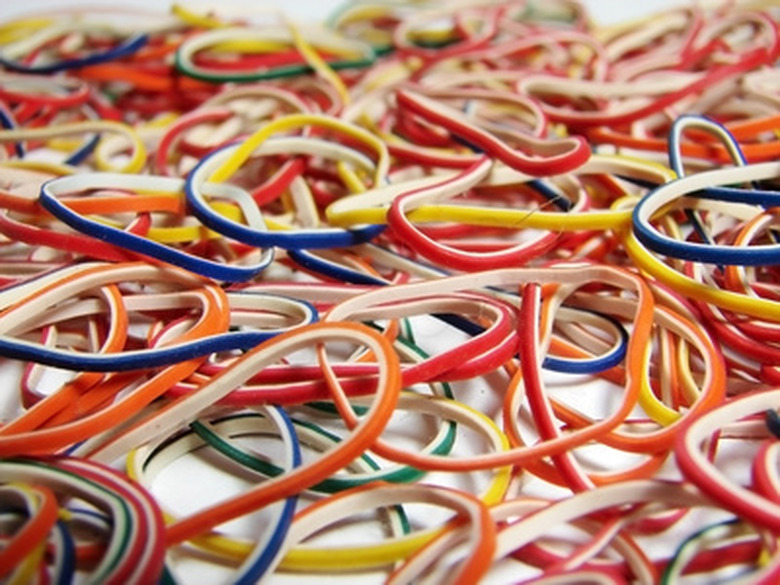Properties Of Natural & Synthetic Rubber
Both natural and synthetic rubber are used in the production of a range of products from tires to footballs to the soles of sneakers. Most natural rubber is produced from a softwood tree native to Brazil, though several other species of trees and shrubs are sources of rubber as well. Synthetic rubber is produced artificially from polymers in different varieties to mimic the different properties of natural rubber.
Natural Rubber
Natural Rubber
Natural rubber has a high tensile strength and is resistant to fatigue from wear such as chipping, cutting or tearing. On the other hand, natural rubber has only moderate resistance to damage from exposure to heat, light and the ozone in the air. Natural rubber also has tack, which means it can adhere to itself as well as other materials. It adheres particularly well to steel cord, which makes it an excellent material for use in tires.
Synthetic Rubber
Synthetic Rubber
In general, synthetic rubber offers better resistance to abrasion than natural rubber, as well as superior resistance to heat and the effects of aging. Many types of synthetic rubber are flame-resistant, so it can be used as insulation for electrical devices. It also remains flexible at low temperatures and is resistant to grease and oil.
Natural vs. Synthetic Rubber
Natural vs. Synthetic Rubber
Overall, the combined properties of natural rubber outweigh synthetic rubbers or combinations of synthetic rubbers available. However, synthetic rubber is advantageous because it is easier to produce. Natural rubber is a crop able to grow only in tropical climates and it doesn't age well, so for many countries it is easier to use synthetic rubber.. Synthetics may also be more useful in certain applications because of their resistance to extreme temperatures and corrosive environments.
Cite This Article
MLA
Labbe, Michelle. "Properties Of Natural & Synthetic Rubber" sciencing.com, https://www.sciencing.com/properties-natural-synthetic-rubber-7686133/. 24 April 2017.
APA
Labbe, Michelle. (2017, April 24). Properties Of Natural & Synthetic Rubber. sciencing.com. Retrieved from https://www.sciencing.com/properties-natural-synthetic-rubber-7686133/
Chicago
Labbe, Michelle. Properties Of Natural & Synthetic Rubber last modified March 24, 2022. https://www.sciencing.com/properties-natural-synthetic-rubber-7686133/
